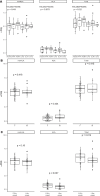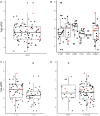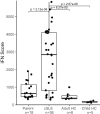Next generation sequencing analysis reveals complex genetic architecture of childhood-onset systemic lupus erythematosus
- PMID: 40499977
- PMCID: PMC12161385
- DOI: 10.1136/lupus-2024-001475
Next generation sequencing analysis reveals complex genetic architecture of childhood-onset systemic lupus erythematosus
Abstract
Objectives: Our current understanding of the genetic architecture of childhood-onset SLE (cSLE) is limited by a dearth of comprehensive genomic studies in cSLE. We have quantified the number of known rare and common SLE risk variants in a diverse cSLE cohort. We characterised type I interferon (IFN) gene expression scores along with genomic data.
Methods: We performed whole genome sequencing on 83 patients with cSLE and 109 unaffected parents and analysed sequences for known common and rare SLE-associated risk variants. Type I IFN gene expression was quantified on a subset of patients. We investigated the relationship between clinical phenotype, genomic profile and type I IFN signatures in this cohort.
Results: Patients with cSLE were enriched for common SLE risk variants compared with unaffected parents and controls. We identified rare SLE risk variants in 11% of individuals with cSLE; those with rare variants had earlier disease onset (<12 years) than those without variants. Patients with cSLE had elevated type I IFN gene expression compared with unaffected parents and controls, even though most patients were treated with immunosuppressive therapy.
Conclusions: Patients with cSLE from this ancestrally and geographically diverse cohort are enriched for common cSLE risk variants compared with controls, and 11% carry a rare variant in known monogenic SLE risk genes. The relationship between rare and common risk variant burden is more complex than previously hypothesised. Our findings indicate that studying patients with cSLE is important for understanding genetic contributions to SLE pathogenesis.
Keywords: Interferon Type I; Lupus Erythematosus, Systemic; Polymorphism, Genetic.
© Author(s) (or their employer(s)) 2025. Re-use permitted under CC BY-NC. No commercial re-use. See rights and permissions. Published by BMJ Group.
Conflict of interest statement
Competing interests: None declared.
Figures





References
MeSH terms
Substances
LinkOut - more resources
Full Text Sources
Medical
